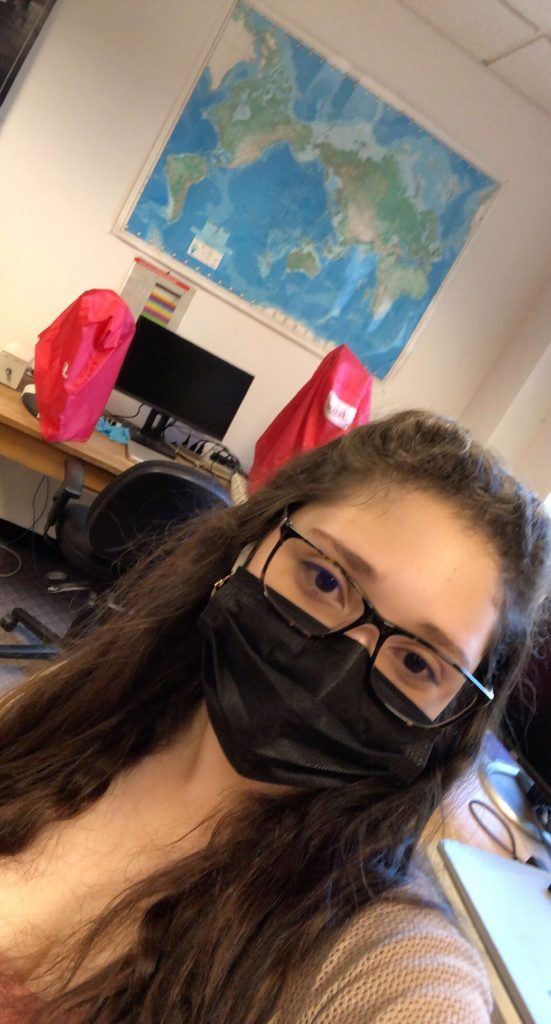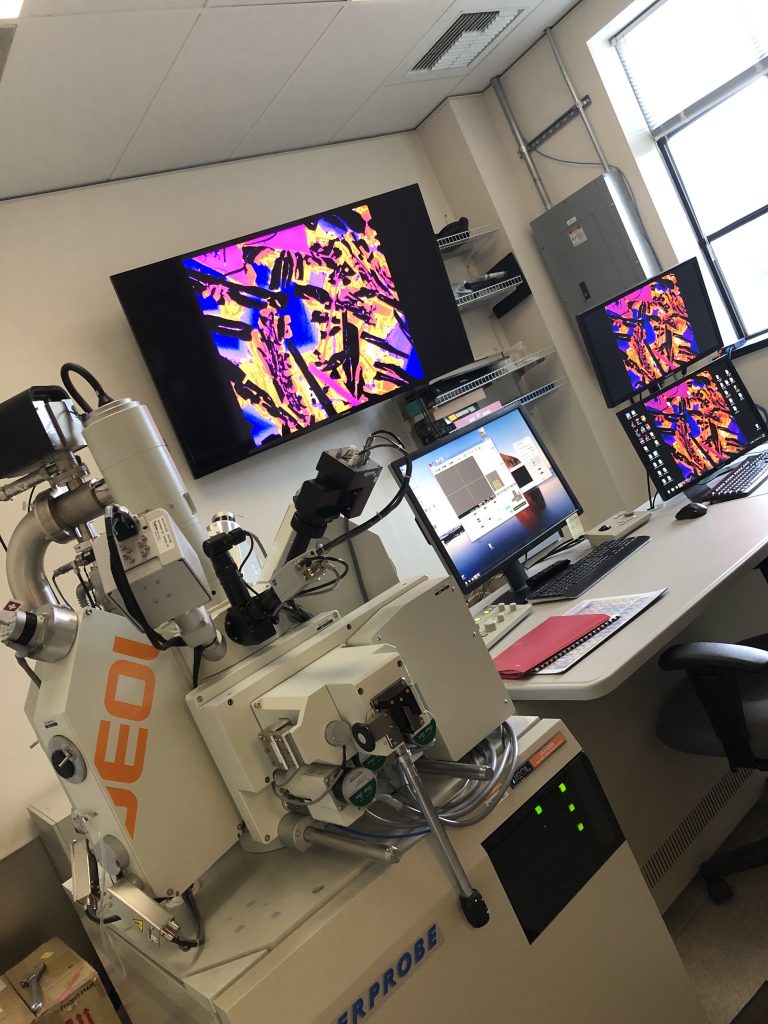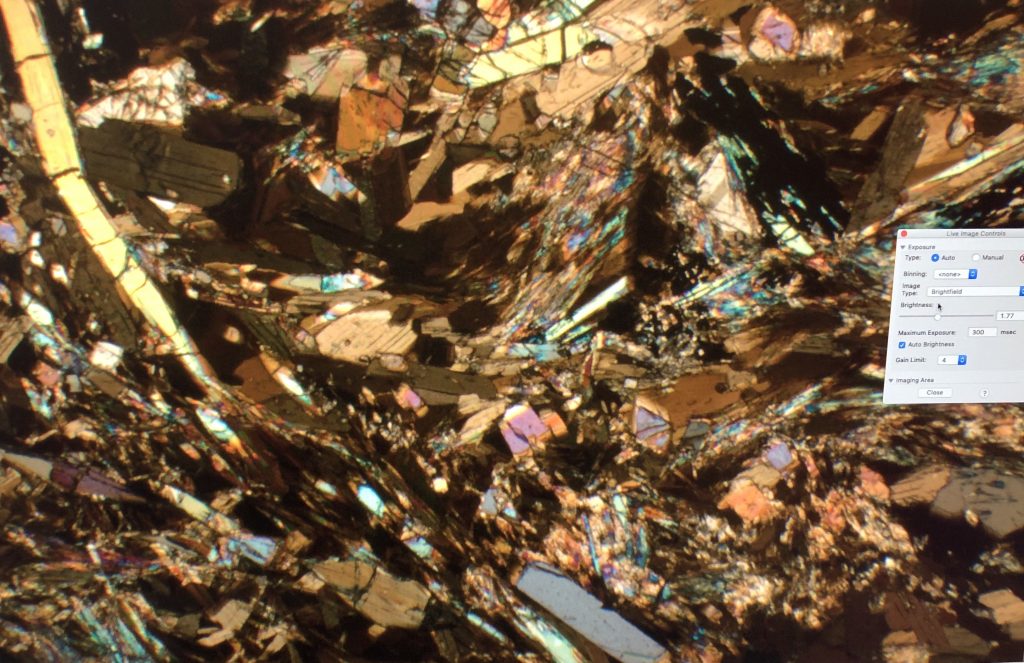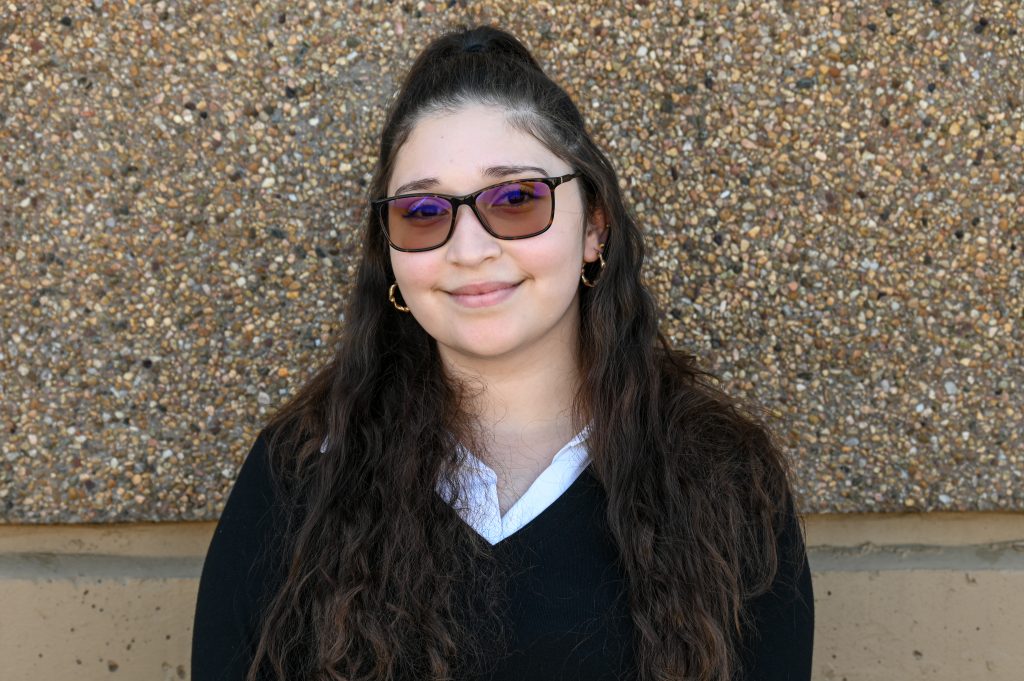
2021 RESESS Intern Zulliet Cabrera Gomez in her office workspace in Boulder, CO. Photo/Zulliet Cabrera Gomez, RESESS Intern 
A glimpse of the electron microprobe lab as the instrument images a thin section that Zulliet is working with this summer. Photo/Zulliet Cabrera Gomez, RESESS Intern 
A magnified view of one of the thin sections that Zulliet is examining this summer. Photo/Zulliet Cabrera Gomez, RESESS Intern 
Zulliet Cabrera Gomez (RESESS) Photo/Scott Johnson, UNAVCO
This summer we’re introducing interns in the RESESS and Geo-Launchpad programs to shine a spotlight on the research projects they are completing throughout these 11-week internships and on their interests in geoscience.
Zulliet Cabrera Gomez is entering her senior year at SUNY Oneonta as a geology major. Although she grew up in a city that lacked a lot of nature, Zulliet got interested in Earth science after taking a course about the subject in high school. When she had the opportunity to attend a suburban college, she had the chance to explore more nature than in her hometown. She entered college undecided in her major; however, a friend recommended that she join the geology department. Once Zulliet began taking courses, she realized how much she enjoyed Earth science. This is her second year as a RESESS intern. She originally applied to the program because her school’s geology department is small and mostly white. As someone who grew up speaking Spanish as her first language, Zulliet missed being able to connect with other students and speak Spanish with them. When an academic advisor sent out an email with opportunities including the RESESS program, Zulliet was excited by the prospect of meeting a diverse group of students who were also passionate about Earth science.
Zulliet’s previous project compared the lower crustal structural geology to the surface geology of the Appalachian Mountains. She also just began a project with a professor at SUNY Oneonta that examines thin sections of an andesitic basalt flow to determine crystal size distribution and the extent of alteration. Last year, the RESESS program was completely online, so Zulliet applied again this year to meet people in person and expand her research experiences.
The University of Colorado Boulder’s Ellen Alexander is mentoring Zulliet this summer. Compared to last year’s project, Zulliet is completely pivoting from seismic analysis and structural geology to mineralogy and petrology. She and her mentor are searching for an answer to why the Colorado Plateau is so elevated. One theory is that since the plateau formed from a subduction event, it is possible that a smaller tectonic plate was swallowed with the subducting slab. The hydration of this continental plate from the oceanic plate could have resulted in its expansion, elevating the Colorado Plateau. As minerals in the continental plate were hydrated, they became less dense. This lower density would cause the lithosphere to rise, explaining the height of the Colorado Plateau.
In order to research this hypothesis, Zulliet is examining nine thin sections with an electron probe and using QEMSCAN. An electron probe bombards the thin section with a highly accelerated, focused electron beam. When the electrons from this beam interact with the rock in the thin section, heat, derivative electrons, and x-rays are all produced. Secondary and back-scattered electrons from these interactions can be utilized to determine the mineralogy and composition of the thin section. QEMSCAN stands for “Quantitative Evaluation of Materials by Scanning Electron Microscopy” and combines back-scattered electron imagery with energy dispersive spectroscopy. Data are collected at a designated interval, usually ranging from 1-30 micrometers, and each point is mapped as a specific mineral. The data output creates a false-color image that can be analyzed for mineralogical identification and percent composition. Similar research to what Zulliet is conducting has been completed in Montana, so continuing this research for the Colorado Plateau will help to further establish trends and potentially apply to other locations with similar geology.
Q&A
- What has been your favorite part of the RESESS program so far?
I really love the fact that I’m doing something that I’m really interested in. It helps a lot when I’m looking at my career goals. And it also helps a lot when I have various people that I know already within the geology RESESS program, and mentors and such, to be able to talk to them… I had some doubts and some fears for my future, and I was like, “I don’t know if I should take a gap year or not!” They’re like, “Yeah, go for it!” So I feel much more secure. I think the best thing for me was being able to talk to them in person.
- What have you gained from your mentorship with Dr. Alexander?
She’s so helpful. She is very descriptive and detail-oriented, so it helps a lot when we’re talking about something. If I have a question about a completely different topic she [answers] it straight off the bat. She has no judgment of my questions. She’s very comfortable. She’s very cool and very informative, which I really like.
- Have you learned about any new topics or research techniques that have really piqued your interest?
I’ve learned a lot. I don’t have a very strong geology background… So everything that I’m learning and have learned here, I’m very grateful [for]. All of it is new stuff. I had no idea there was an EPMA, an electron probe micro-analyzer… I didn’t know you can look at the thin section at even more depth with a specific camera. That’s so cool! I’m looking at the temperature of the Moho and all that, that’s new to me, just really cool.
Zulliet is planning to take a gap year, during which she hopes to travel to Spain for a bit and mostly hopes to not be in a city for a while! She plans to attend graduate school to study volcanology, mineralogy, and petrology, and then obtain a government position. Another goal of Zulliet’s is to travel to a Spanish-speaking country for a couple years to conduct research in Spanish in order to continually practice and expand on her Spanish communication skills.
Written by:
- Lucia Bellino, USIP Intern
- Posted: 2 July 2021
- Last updated: 2 July 2021
- Tags: EPMA, internships


